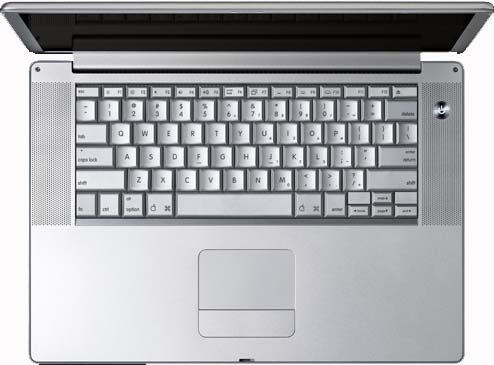|
|
|
|
|
|
|
|
|
|
|
|
Exchange Server
Another reason why UniRecovery continues to achieve such an impeccable success rate is its team of Exchange server specialists. This team of experts have acquired extensive knowledge of recovering data from terabyte servers, like those used by large financial institutions, for example the City Group. UniRecovery has also developed, in collaboration with Pulse Technologies, a very unique and high-tech recovery tool for exchange servers. This allows UniRecovery to provide you with the following service:
- Collection of your damaged hardware (a supplementary cost may be charged depending on your location).
- NO FIX NO FEE: no charge if your data cannot be recovered!
- A Door to Door collection & delivery all included in our service.
- to charge a FIXED Rates for the recovery of your data irrespective of the time it takes to recover.
- On receipt, the allocation of two qualified engineers dedicated solely to retrieving your data. As far as possible, they will work around the clock in order to achieve the speediest recovery
- Extensive expertise in dealing with many problems like yours on servers, and specialised high technology to best carry out the recovery
- Non-intrusive technologies which guarantee the integrity of data and hardware are not compromised
- Retrieval of data in highly controlled environments (Clean Rooms Class 1000, Class 100 and Class 10 are only ever used)
- The shortest turn-around time achievable: 6 hours - 3 days depending on the extent of the damage and the size of the hardware
- Return of all your recovered data on a brand new hard disk (either supplied by you, or by UniRecovery at an agreed cost).
All About Recovery Planning: Why Plan?
The primary objective of a Business Continuity or Disaster Recovery Plan is to enable an organization to survive a disaster and to re-establish normal business operations.
In order to survive, the organization must assure that critical operations can resume normal processing within a reasonable time frame. Therefore, the goals of the Business Continuity Disaster Recovery Plan should be to:
-
- Identify weaknesses and implement a disaster prevention program
- Minimize the duration of a serious disruption to business operations
- Facilitate effective coordination of recovery tasks
- Reduce the complexity of the recovery effort.
Historically, the data processing function alone has been assigned the responsibility for providing continuity planning through a Disaster Recovery Plan, typically associated only with recovery of IT functionality. Frequently, this has led to the development of recovery plans to restore computer resources in a manner that is not fully responsive to the needs of the business supported by those resources.
Business continuity planning is more comprehensive with a business operations focus rather than a data processing focus. In the past year, it has become clear that disaster recovery must include a business process oriented business impact analysis and a determination of what other systems are required to operate, such as: paper forms, skilled and knowledgeable people, special equipment, communications systems, work space and inventory.
In today's environment, the effects of long-term operations outage may have a catastrophic impact. The development of a viable recovery strategy must, therefore, be a product not only of the provider's of the organization's data processing, communications and operations centre services, but also the users of those services and management personnel who have responsibility for the protection of the organization's assets.
The methodology used to develop the plans, emphasize the following key points:
-
- Providing management with a comprehensive understanding of the total effort required to develop and maintain an effective recovery plan
- Obtaining commitment from appropriate management to support and participate in the effort
- Defining recovery requirements from the perspective of business functions
- Documenting the impact of an extended loss to operations and key business functions
- Focusing appropriately on disaster prevention and impact minimization, as well as orderly recovery
- Selecting project teams that ensure the proper balance required for plan development
- Developing a continuity plan that is understandable, easy to use and easy to maintain; and
- Defining how continuity planning considerations must be integrated into ongoing business planning and system development processes in order for the plan to remain viable over time.
The successful and cost effective completion of such a project requires the close cooperation of management from all areas of Information Systems as well as business areas supported by Information Systems. Senior personnel from Information Systems and user areas must be significantly involved throughout the project for the planning process to be successful.
What if I Don’t Plan?
-
- Loss of business if a disaster occurs - A recent group study found that:
- 70% of companies that suffer a major IT disaster, without a valid recovery plan in place, fail within the next year.
- Of those that do survive, only 10% make a full recovery.
- With out a plan, recovery is guaranteed to be slower, resulting in:
- Loss of customers
- Lost sales revenue
- Loss of shareholder confidence
- Without a plan, recovery is always more expensive
- Investors will require it
- Protection of directors from liability concerns
- SEC requires it for public companies
- Numerous regulations require planning (see the Knowledge Base at www.DisasterRecovery.com)
- NFPA standard 1600 may soon be law, which will require a written plan for all companies and buildings (similar to Y2K plan requirements for all business to have a written plan)
What do You Mean by a Disaster?
This is a typical question, based on the thought “What kind of disaster would I possibly need to plan for?” A disaster is defined as any event, which disrupts operations to the point of having a significant interruption of service or operation with a resulting negative impact, such as:
- Storm
- Fire
- Employee Strike
- Tornado
- Hurricane
- Flood
- Malicious employee damages systems
- Hardware failure
- Software failure
- Virus
- Theft or robbery
- Implement a Plan
In closing, it is important to keep in mind that the aim of the planning process is to:
- Assess existing vulnerabilities
- Implement disaster avoidance and prevention procedures; and
- Develop a comprehensive plan that will enable the organization to react appropriately and in a timely manner if disaster strikes.
Plan your response to a disaster. Disasters do not come with advanced warning and thinking it all through in advance and preparing a written procedural response to business resumption and recovery is the only prudent and responsible course of action.
A written, well-prepared Business Continuity and Disaster Recovery plan is an absolute must for business success in our world today.
Dale Windle
|
| Our Laboratories: |
UniRecovery guarantees: |
|
As a single speck of dust entering a hard disk could cause fatal results. It is larger than the distance between the read/write heads and the platter in a hard disk (40 microns, a human hair being 100 microns thick) and its collision with the Hard Disk head would be extremely detrimental.
Our advanced laboratories are equipped with Clean Rooms rated as ‘Class 1000, 100 & 10 ’ where there exists no more than 1000 particles; and ‘Class 100’ where there exists no more than 100 particles whereas with "Class 10", less than 10 particles of 0,5 µm found in our Cabim-Flow which is of "Class 10".
The air quality of the Clean Rooms complies with the applicable standards BS 5295, ISO 14644-4 and Federal Standard 209. Hard disk fabrication requires a ‘Class 100’ Clean Room and UniRecovery undertake all laptop hard drive recovery work in Clean Rooms ‘Class 10’. Commonly established, recovery from “Clicking” hard disk drives, can also be achieved under these specialised Clean Room conditions. |
- NO FIX, NO FEE : no charge if your data cannot be recovered!
- to charge Fixed Rates for the recovery of your data irrespective of the cost & time it takes to recover.
- Door to Doorcollection & delivery all included in our fixed rates.
- RAPID RESPONSE : in order to get you back up and running with the shortest possible delay.
- To maintain the highest standard of work environment with the use of Clean rooms within all our laboratories, in which air quality complies with the applicable standards BS 5295, ISO 14644-4 and Federal Standard 209.
- Extensive experience and expertise in recovering data from ‘inaccessible’ hard drives.
- Data recovery from SCSI, RAID s, SANs or NASs servers, Mirrored and Striped Volume, Exchange Servers , RAID or NAS servers, backup tapes, floppy diskettes, Zip, Optical Media.
- Complete discretion with regards to client data protection.
- A specialist team of RAID server qualified data recovery engineers.
- Free post-recovery customer services: providing you with measures to prevent similar losses in the future.
- Recovery (if the data is recoverable) solutions for data loss caused by power surges, software or system malfunction, lightening, fires, floods, sabotage, user errors, accidental format, deletion, repartitioning.
- A specialist team of forensic data recovery experts for litigation cases.
|
|
Links
RAID data recovery, Mac data recovery, Unix data recovery, Linux data recovery, Oracle data recovery, CD data recovery, Zip data recovery, DVD data recovery , Flash data recovery, Laptop data recovery, PDA data recovery, Ipaq data recovery, Maxtor HDD, Hitachi HDD, Fujitsi HDD, Seagate HDD,
Hewlett-Packard HDD, HP HDD, IBM HDD, MP3 data recovery, DVD data recovery, CD-RW data recovery, DAT data recovery, Smartmedia data recovery, Network data recovery, Lost data recovery, Back-up expert data recovery, Tape data recovery, NTFS data recovery, FAT 16 data recovery, FAT 32 data recovery, Novell data recovery, Recovery tool data recovery, Compact flash data recovery, Hard drive data recovery, IDE data recovery, SCSI data recovery, Deskstar data recovery, Maxtor data recovery, Fujitsu HDD data recovery, Samsung data recovery, IBM data recovery, Seagate data recovery, Hitachi data recovery, Western Digital data recovery, Quantum data recovery, Microdrives data recovery, Easy Recovery, Recover deleted data , Data Recovery, Data Recovery Software, Undelete data, Recover, Recovery, Restore data, Unerase deleted data, unformat, Deleted, Data Destorer, fat recovery, Data, Recovery Software, File recovery, Drive Recovery, Recovery Disk , Easy data recovery, Partition recovery, Data Recovery Program, File Recovery, Disaster Recovery, Undelete File, Hard Disk Rrecovery, Win95 Data Recovery, Win98 Data Recovery, WinME data recovery, WinNT 4.x data recovery, WinXP data recovery, Windows2000 data recovery, System Utilities data recovery, File data recovery, Disk Management recovery, BitMart 2000 data recovery, Hard Drive Data Recovery, CompactFlash I, CompactFlash II, CF Compact Flash Type I Card,CF Compact Flash Type II Card, MD Micro Drive Card, XD Picture Card, SM Smart Media Card, MMC I Multi Media Type I Card, MMC II Multi Media Type II Card, RS-MMC Reduced Size Multi Media Card, SD Secure Digital Card, Mini SD Mini Secure Digital Card, TFlash T-Flash Card, MS Memory Stick Card, MS DUO Memory Stick Duo Card, MS PRO Memory Stick PRO Card, MS PRO DUO Memory Stick PRO Duo Card, MS Memory Stick Card MagicGate, MS DUO Memory Stick Duo Card MagicGate, MS PRO Memory Stick PRO Card MagicGate, MS PRO DUO Memory Stick PRO Duo Card MagicGate, MicroDrive Card and TFlash Memory Cards, Digital Camera Memory Card, RS-MMC, ATAPI Drive, JVC JY-HD10U, Secured Data Deletion, IT Security Firewall & Antiviruses, PocketPC Recocery, System File Recovery , RAID
|
UniRecovery
|













